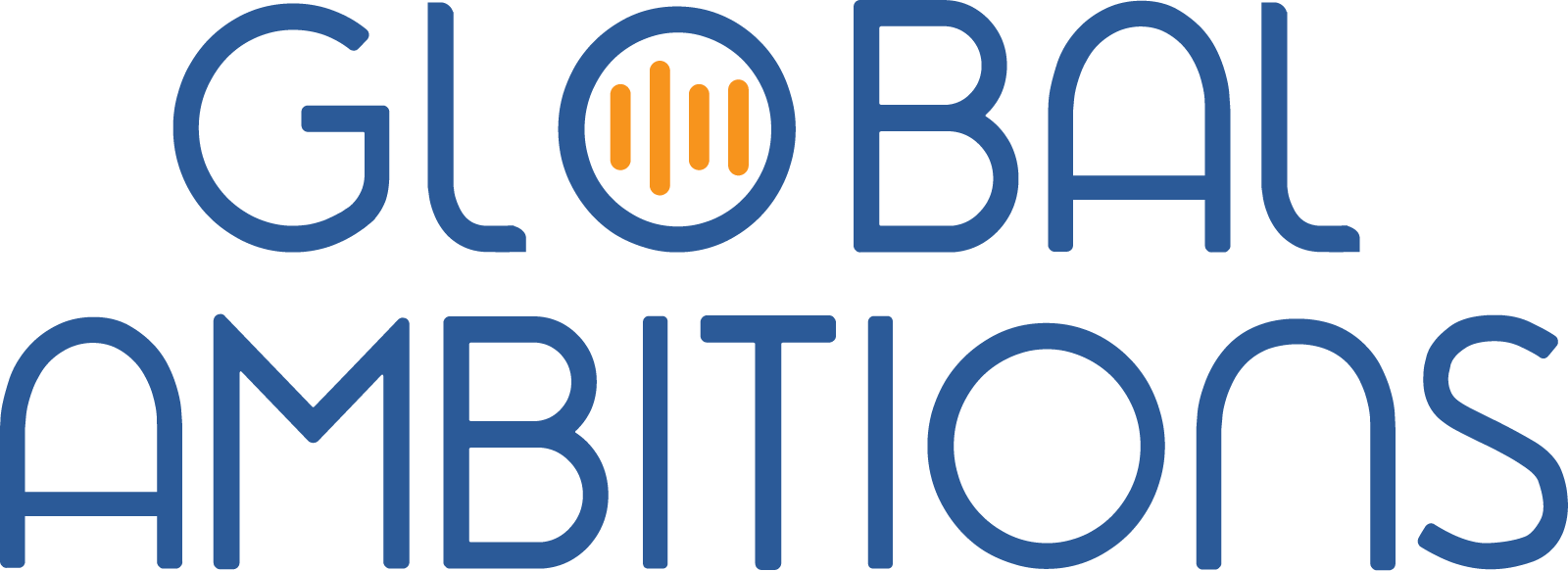Episode 5: With Hartmut von Berg, Head of Localization at LogMeIn
Below is the full transcript of Episode 5 of Global Ambitions.
Antoine Rey 0:16
Hello everyone my name is Antoine Rey, and I will be your host today for this global ambitions podcast episode. My guest today is Hartmut von Berg who’s the head of localization at LogMeIn. The topic today is strategic localization, and how to build a sphere of influence and align to corporate functions. Welcome to the podcast. Can you introduce yourself and tell us a bit more about your role at LogMeIn.
Hartmut von Berg 0:46
Yeah. Hi, my name is Hartmut von Berg. I’m head of localization at LogMeIn, and thanks for having me here. I’ll tell you a little bit about LogMeIn as not everybody knows that company.
Hartmut von Berg 1:00
We have a few category-defining products and services like GoToConnect, GoToMeeting, 360 Rescue, or LastPass, just to name a few. And we help millions of people around the world to stay connected secure and supported and productive. Especially during the current times that we are navigating. And we provide a compelling experience for global audiences along their journey with us. We localize the customer experience for 17 products from customer acquisition to product UI to customer care.
Hartmut von Berg 1:39
And that ties nicely into the topic that we’re talking about, to be able to provide the services and to really help our customers understand and use our products. It’s really essential that you build a global mindset in the company and you also build a very mature localization function that does more than just localizing what they get on their table.
Antoine Rey 2:07
You and I talked before and spent a lot of time in this industry over the last 20 years and you’re one of those people that has managed to move away from just being a language support function to becoming a strategic language function within your organization. And can you maybe tell us a bit more about the biggest challenges that you faced with getting support and building that sphere of influence for your team, or can tell you a little about that?
Hartmut von Berg 2:30
I think the biggest challenge I faced in my role was when I hadn’t been in that role. So, I could tell you a little bit about the background of the localization functional LogMeIn. So in 2017, we emerge out of a merger of the previous Citrix online business and a company called LogMeIn, which the new SaaS provider LogMeIn, and due to this merger, also a lot of functions had to be merged and centralized. So at Citrix online localization at that point in time, was aligned to the engineering function. And at LogMeIn in the past, it was aligned to the tech writing function.
Hartmut von Berg 3:25
And this is a typical scenario that you might find yourself in, and it created the necessity to bring this team together to form a unified localization. It also created a real opportunity to realign function and to think about what the best place could be. So an easy way would have been just to go with, Okay, let’s merge and align it to one of the original places where we have products that were available. But this was a unique opportunity that made me think about what is the right place for the localization function. And how should it look like? And so I started to brainstorm with my team, looked at external resources, and talked to a lot of people. And then I look inside the company and tried to map, what I learned from the industry to our own specific situation. And I came up with the idea that it might be very helpful if the localization function is aligned with the people and functions that drive the international business, that drives international growth.
Antoine Rey 4:40
So how do you go about developing that alignment, then and those relationships with those people?
Hartmut von Berg 4:48
Yeah, exactly. So finding or identifying was the easy part. And then, the challenge was how to align to those people how to get connected, how to convince them that they should be owning localization. One thing that helped me was that I was trying to understand what drives them. So what are they looking at, what are their goals, and how can I support those goals. So we have a lot of ideas about what localization could do, but the essential piece is finding the right thing, that is compelling to those people so they can say it’s okay if I own that function. I know there’s a team that’s self-contained, they can do their job, they can really add value to my function. If you don’t get that piece. It’s going to be a hard time to convince them.
Antoine Rey 5:42
Right. And that’s very good advice I think for our listeners to make sure that they do contribute to the goals of their stakeholders, and to get them on board. Very good. And so in that process. I’m sure you’ve encountered some, not only challenges but heard of some failures or things that you would advise our listeners. Do not go after this, don’t do that, or avoid that. Can you give us some examples of something that may have gone wrong in that process?
Hartmut von Berg 6:12
Yeah, I could identify something that I could share with the leader of an international business, and that was, we were looking for one specific product into the localization readiness because we always saw a big desire to roll out that product globally from sales. They wanted to sell the product they saw all these opportunities out there. But I, being an engineer in my past history, I knew about the challenges of the product. And so we created an assessment of the localization readiness for specific markets and countries, and that was something that I could share. But then, reaching out to those people, starting to get in contact. By being very focused on achieving this small little thing, it was nearly screwed up by another thing that I was not aware of which was happening in the company.
Hartmut von Berg 7:08
So I was focusing too much on that target and lost sight of what was happening around me. So we had an external consultancy in the company looking into an optimal design. And those people are redesigning the org structure, realigning how this merged company should look like and operate in the future. So they were all looking into all those functions, and they also came up with an idea about localization. But it was such a small thing so they didn’t invest too much time into it so they just aligned it to something to another function. Fortunately, I was made aware of that and I quickly intervene, but it almost failed. So that’s that was a tough learning because it would have really been a pity because if that happens, redirecting it again into the direction that you want to pursue gets even harder. Right, so the advice would be to really look out at what’s happening around you. Not only talk with your design target, with your target executive, and try to pave your way there. Also, talk with other people. What they think about this idea and how they see the whole function. Talk to stakeholder groups or internal customers, where they would see a localization function. So get supporters for your idea on a very broad level.
Antoine Rey 8:35
Okay, and so to follow up on that idea that you get supporters because I presume this is a big part of the success of what you’ve been doing. Who did you go after the get on board successfully beyond your own management, C level, finance? Maybe you can share some ideas around that with the listeners, and also does that lead to more visibility of you been able to present what localization is doing at a corporate level?
Hartmut von Berg 9:05
Because I was somehow well connected to the executives, because I also had a different role and including that role I had a connection to the CEO and so forth. But I never talked in depth or had to talk about this idea with the CEO because it was not the right level to make those decisions. Building the network is an important thing. Really getting somebody who trusts you that you can build and run and operate this function.
Hartmut von Berg 9:07
And who was that somebody? Was that your management?
Hartmut von Berg 9:42
Yeah, it was my direct management that prioritizes and helped me open doors to the right people to present my idea. And then also to the designated management that I wanted to align to get their support and to figure out how they are thinking, how the management structure should look like. So should I align directly to the international general manager or should I align to somebody below? These kinds of discussions are very key so that you really understand what they are looking for. And so you can support those desires.
Antoine Rey 10:21
And do you feel that once you find that sphere of influence and you are aligning to the corporate objectives that you get a channel to go and present that at a global level in the organization? Or did you get that channel to present that to the rest of the organization?
Hartmut von Berg 10:40
It wasn’t really necessary that the support that I got fortunately was in a way that those people helped to get the support from the levels above. But at their level, they also help to open the doors to the other functions that you need to talk to because you’re probably moving cost centers or you need to realign cost centers. All things that come together. And so you can leverage your management to open the doors to finance. You can leverage to open the doors to upper-level marketing. To internal stakeholders, etc. To present about what localization is. I didn’t have to talk about the alignment too much because it was very clear I could see that I found the right process. Immediately that helped me.
Hartmut von Berg 11:40
So that was fortunate. But then really developing this and embedding the function, and changing the model of how you operate. That’s the next challenge that you need all the support from your direct management and from upper management to open the doors to be able to present to the right people because what we did before, when we tried to change something in the processes, how we operate it, we talked to the people that we’ve been working on a day to day basis. But they were not in the position to change processes on a larger scale or to really change cost center structures or the way you operate. Whether you centralize budget management for localization or not. If you want to do such things. You need to get a seat at the table of the heads of those functions of finance, marketing, etc.
Antoine Rey 12:36
And that’s where you need to enlarge your sphere of influence. But from what you’re saying and I’m conscious of time here today. It seems that you need your management on board. First, you need to make sure they’re well connected, that they introduce you to all the different stakeholders that you’re going to have to engage with, and that you are contributing to the success of those stakeholders and showing them how you’re going to be contributing to their success, and that seems critical in the overall process. Listen to the thanks very much for participating in this podcast and I’m sure we’ll talk again very soon.
Hartmut von Berg 14:12
Looking forward to it. Thanks.

Hartmut von Berg
Head of Localization at LogMeIn




